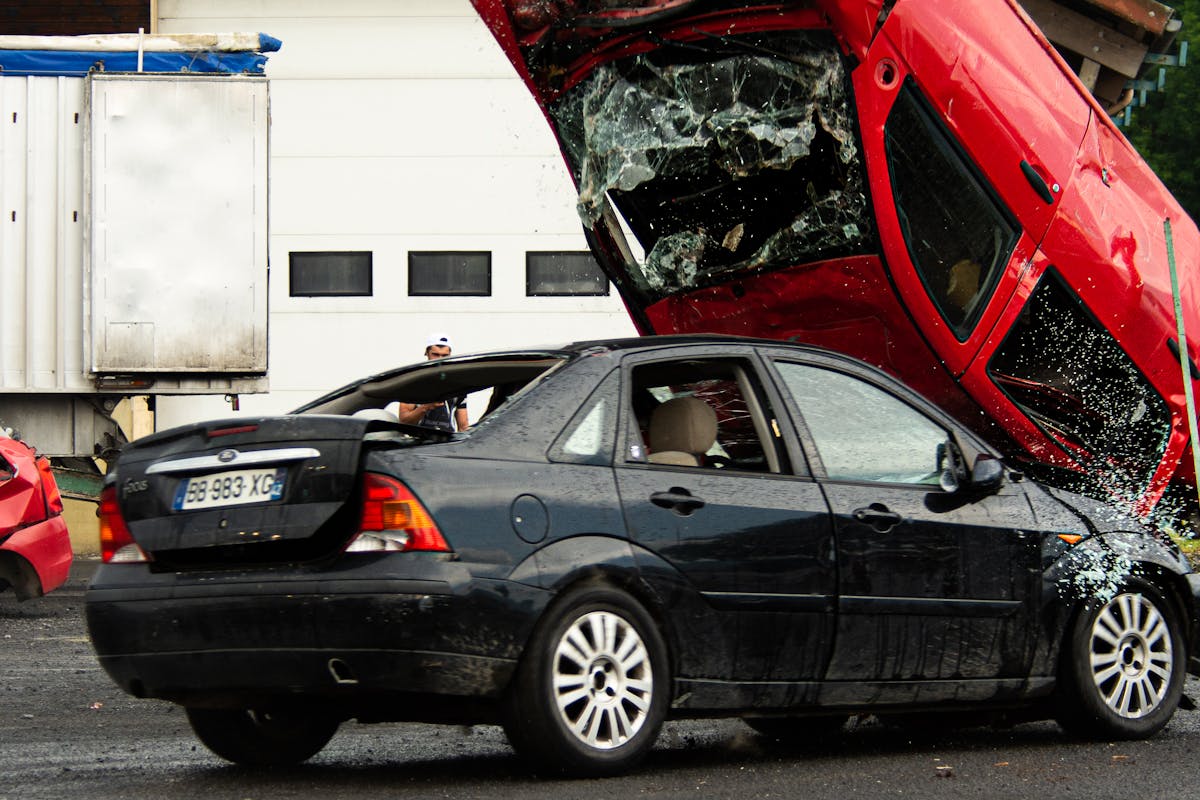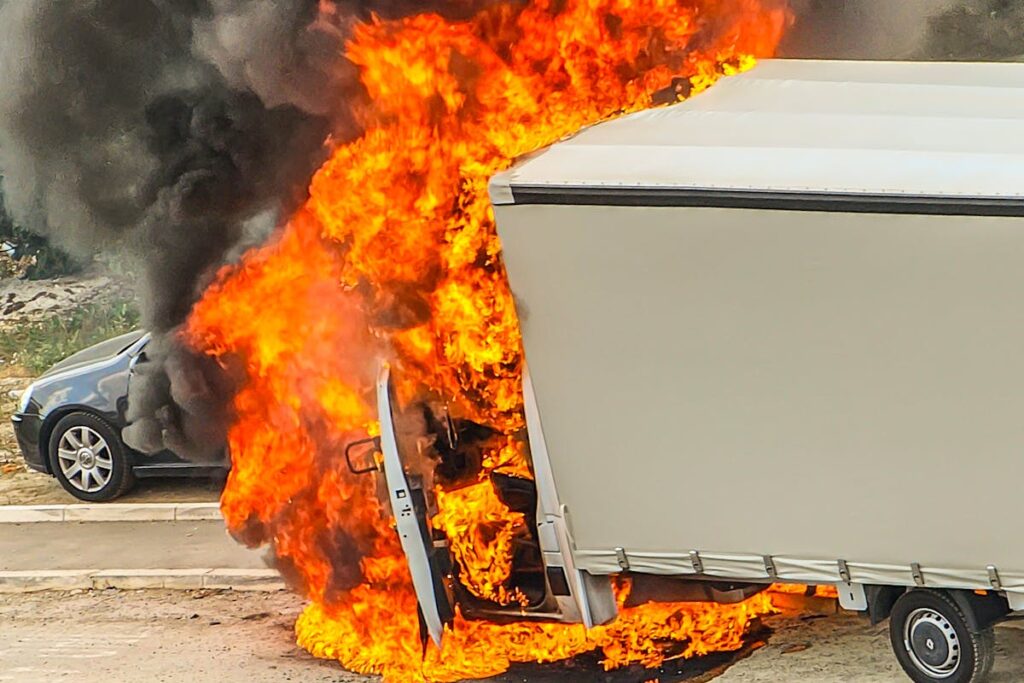As we examine the harrowing phenomenon of multi-vehicle pileups and highway disasters, it becomes evident that multiple factors including human behavior, environmental conditions, and equipment malfunctions contribute to these terrifying incidents. The implications of these accidents extend far beyond the immediate, often resulting in significant physical injuries and financial turmoil for those involved. The necessity for improved preventive measures and driver education is apparent, however, the best approach to these solutions remains a matter of debate. As we explore this topic further, we invite you to ponder the complexities surrounding these incidents and the potential strategies for mitigation.
Understanding Multi-Vehicle Pileups
Analyzing multi-vehicle pileups involves unraveling the complex chain of events that lead to these disastrous occurrences. The analysis is complex, as it must take into account a multitude of factors, each with its own potential impact on the final outcome. These factors include driver behaviors, road conditions, vehicle performance, and the sequence of events leading up to the accident.
Driver behaviors play a significant role in multi-vehicle pileups. Factors such as driver distraction, fatigue, and impairment can drastically impact a driver’s ability to react appropriately to changing conditions on the road. In addition, aggressive driving behaviors such as tailgating and sudden lane changes can increase the risk of a pileup.
Accident sequences, or the order in which events occur during a multi-vehicle pileup, can provide important insight into how these incidents unfold. For instance, it may be that a certain sequence of events is more likely to result in a pileup than others. By understanding these sequences, it may be possible to develop strategies to prevent such accidents from occurring in the future.
Common Causes of Highway Disasters
While multi-vehicle pileups are a significant contributor to highway disasters, there are also other common causes that can lead to such catastrophic events.
Driver negligence, for instance, is a prevalent factor in many highway mishaps. This includes speeding, reckless driving, or failure to adhere to traffic regulations, which can culminate in disastrous outcomes. Distracted driving, another form of negligence, is a modern menace on the highways. The advent of smartphones and in-car entertainment systems has multiplied the potential for distractions, leading to fatal accidents.
Equipment failure also plays a significant role in causing highway disasters. This could range from brake failures, tire blowouts, to steering or suspension system failures. Regular maintenance is essential to prevent such failures, yet, many drivers overlook this important safety measure.
The state of road conditions cannot be overlooked either. Poorly maintained roads, lack of proper signage, or inadequate lighting can contribute to accidents. Potholes, unexpected road work, or debris can also lead to dangerous situations, especially if drivers are unprepared or unaware.
The Role of Weather Conditions
Without a doubt, weather conditions play an essential role in the occurrence of highway disasters. Changing weather patterns, particularly sudden shifts, can create unexpected hazards that drivers may not be prepared to handle. For instance, rapid temperature drops can lead to icy roads, increasing the risk of skids and collisions due to loss of vehicle control.
Rain, snow, fog, and dust storms are among the weather conditions that can cause severe visibility issues. Reduced visibility makes it hard for drivers to judge distances and see potential hazards ahead. In these circumstances, the risk of multi-vehicle pileups escalates, as one collision can quickly trigger a chain reaction of crashes.
Extreme weather phenomena, such as tornadoes or hurricanes, can also lead to disastrous situations on highways. High winds can cause vehicles, especially high-profile ones like trucks and SUVs, to lose stability and control. Furthermore, heavy rainfall can lead to flooding, turning roads into dangerous waterways.
Impact on Victims and Families
Innumerable lives are irrevocably altered by multi-vehicle pileups and highway disasters. The immediate physical injuries and fatalities are starkly apparent; however, the subsequent emotional and financial impacts on victims and their families are often overlooked.
Victims often require considerable emotional support to cope with trauma, loss, and the intimidating prospect of recovery. This emotional turmoil is not confined to the victims, as families endure their loved ones’ suffering and sometimes face the unbearable loss of life. Emotional support becomes a vital element in mitigating the psychological effects of these catastrophic events.
The financial burden is another significant impact. Medical bills for victims’ treatment can be overwhelming, especially for those without adequate insurance coverage. The loss of income due to disability or death exacerbates this burden, pushing families into financial hardship. For those who lose their sole breadwinner, the economic consequences can be devastating.
Highway Disaster Statistics
The sheer magnitude of the emotional and financial impacts of multi-vehicle pileups and highway disasters can be better understood through the lens of statistical data. According to the National Highway Traffic Safety Administration, highway safety remains a considerable concern with approximately 36,096 fatalities in motor vehicle crashes in 2019. This clearly demonstrates the alarming scale of the problem and emphasizes the need for effective prevention strategies.
Accident rates, particularly multi-vehicle pileups, have been on a steady increase over the last decade. These accidents often result in a higher number of casualties due to the chain reaction they create. Statistics show that almost 1 in every 4 deaths on the highway involves a multi-vehicle pileup. The financial burden associated with these accidents is colossal, with the cost of highway crashes estimated at $871 billion annually.
In analysis, these statistics underscore the urgency to improve highway safety. The data suggests that targeted efforts to reduce multi-vehicle pileups could considerably decrease the overall accident rates and consequent fatalities. This information is a critical tool in shaping policies and interventions aimed at reducing the occurrence of these devastating highway disasters.

Investigation and Legal Proceedings
Steering through the complexities of investigation and legal proceedings often arises following multi-vehicle pileups and highway disasters. This painstaking process commences with meticulous evidence collection, an essential component in determining culpability. Investigators rely on physical clues at the scene, such as skid marks, vehicle damage, and any remnants of traffic signals or signs. They may also utilize photographic evidence and eyewitness accounts to reconstruct the accident’s sequence of events.
The collected evidence provides a factual basis for legal proceedings. In these proceedings, legal representation is indispensable. Lawyers interpret the evidence, argue liability, and handle insurance claim negotiations, aiming to guarantee just compensation for their clients’ losses. The legal landscape of these cases is often complicated by multiple parties involved – each potentially bearing a degree of fault. Legal representatives must adeptly navigate this complexity, balancing the facts of the case against applicable laws and insurance policies.
Safety Measures and Prevention
Countless highway disasters underscore the critical importance of safety measures and prevention in mitigating the frequency and severity of multi-vehicle pileups. The implementation of advanced safety technology and extensive driver education emerges as central to this cause.
Safety technology, such as collision avoidance systems and automatic braking, have proven significant in reducing the risk of accidents. These systems use radar, lasers, and cameras to detect an impending clash, promptly alerting the driver or automatically taking control to prevent the collision. Additionally, vehicle-to-vehicle communication technology, still in its nascent stages, promises to revolutionize roadway safety by allowing cars to share information about speed and position, potentially averting pileups.
Complementing technology, driver education underscores responsible driving behavior. Extensive driving courses that include theoretical knowledge, practical skills, and a focus on hazard perception can equip drivers better to navigate tricky on-road situations. Moreover, education about the dangers of distracted driving, a primary cause of pileups, is paramount.
Case Studies of Major Pileups
Turning our attention now to notorious highway catastrophes, it is essential to examine specific case studies of major pileups in detail. By scrutinizing the causes and consequences of these incidents, we can gain a more thorough understanding of the circumstances leading up to these events and the ramifications they have had. This analysis will provide valuable insights into the dynamics of multi-vehicle pileups and can inform future strategies for prevention and response.
Infamous Highway Catastrophes
In the annals of road transportation, there are certain incidents that stand out for their sheer scale and impact. These infamous highway catastrophes provide stark reminders of the importance of road safety and efficient traffic management.
One of the most notorious examples is the 1991 Interstate 5 dust storm pileup in California, which involved 164 vehicles, resulted in 17 fatalities, and injured over 150 people. This incident was primarily caused by poor visibility due to a severe dust storm, highlighting the critical role of weather conditions in road safety.
Another significant case is the 2002 fog-related pileup on the autobahn A19 in Germany. The collision involved 259 vehicles, causing 10 deaths and injuring 82 people. This incident underscores the need for effective traffic management strategies in adverse weather conditions, particularly in high-speed motorways.
The 2011 M5 motorway firework display pileup in the UK is another infamous catastrophe, involving 34 vehicles, causing 7 fatalities and 51 injuries. It was determined that a nearby firework display had severely reduced visibility on the highway, raising questions about the regulation of such events in proximity to major roads. These incidents underscore the continual challenge of maintaining road safety and effective traffic management.
Causes and Consequences
Numerous multi-vehicle pileups, each with its own unique set of causes and tragic outcomes, demonstrate the complexity and inherent risk associated with highway travel. Driver behavior is a vital factor that contributes to these disasters. Distracted driving, excessive speed, and aggressive maneuvers can quickly escalate into a chain-reaction accident involving multiple vehicles. Poor visibility due to weather conditions or nighttime driving often exacerbates these situations, as it gives drivers less time to react to sudden changes in traffic flow.
Road design can also play an essential role in these incidents. High-speed highways that incorporate sharp turns, inadequate signage, or insufficient separation between lanes can greatly increase the risk of a pileup. Even well-designed roads can become hazardous if they are not properly maintained, with issues such as potholes or worn-out markings leading to confusion and accidents.
The consequences of these pileups are devastating. They often result in numerous fatalities, severe injuries, and extensive property damage. Beyond the immediate impact, these incidents can cause long-term emotional trauma for survivors and their families, disrupt local economies, and necessitate costly reconstruction efforts. Each case serves as a stark reminder of the inherent risks of highway travel and the need for ongoing efforts to improve driver behavior and road safety.
Frequently Asked Questions
How Does Highway Design Contribute to Multi-Vehicle Pileups?
Highway design greatly influences road safety. Factors such as road curvature and lane width can affect driver visibility and maneuverability, potentially leading to incidents if not properly considered and implemented in the design phase.
What Are the Psychological Effects on Survivors of Pileups?
Survivors of traumatic incidents often experience psychological repercussions such as survivor guilt and post-traumatic stress disorder (PTSD). Effective trauma recovery methods are essential to help them regain mental stability and cope with these emotional burdens.
Are Certain Types of Vehicles More Prone to Cause Pileups?
Yes, certain vehicles like trucks are more prone to cause pileups due to their size and difficulty to maneuver. Weather conditions can exacerbate this issue, as slippery roads make it harder to control these large vehicles.
What Role Do Emergency Services Play in These Disasters?
Emergency services play an integral role in these situations, providing immediate emergency response to guarantee safety. They conduct rescue operations, manage traffic, and provide medical assistance, critically mitigating the repercussions of such catastrophic events.
How Do Insurance Companies Handle Claims From Multi-Vehicle Accidents?
Insurance companies handle claims from multi-vehicle accidents through extensive claim processing. This involves detailed investigations to establish liability determination, taking into account each driver’s role, policy coverage limits, and any relevant state laws.

